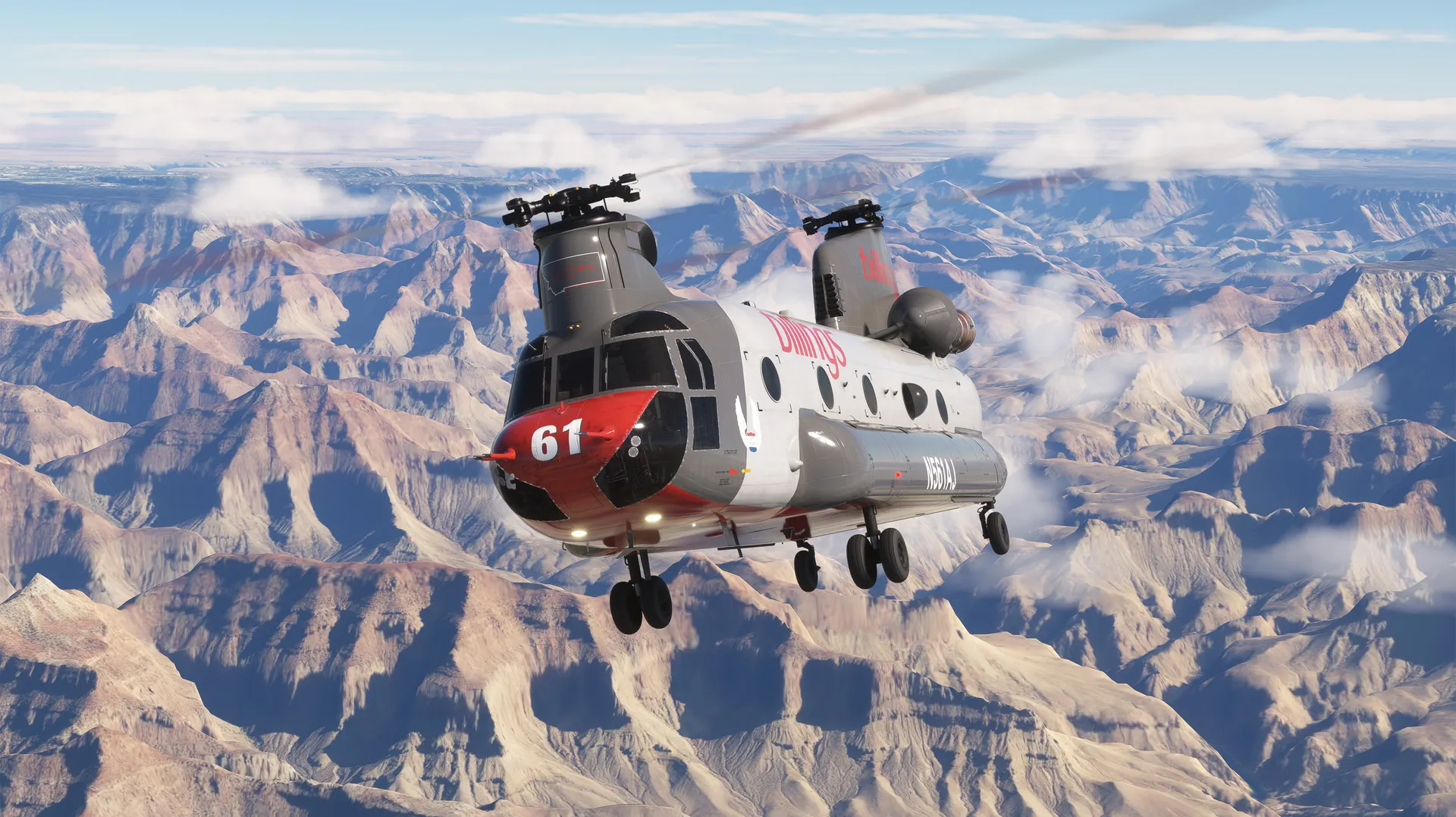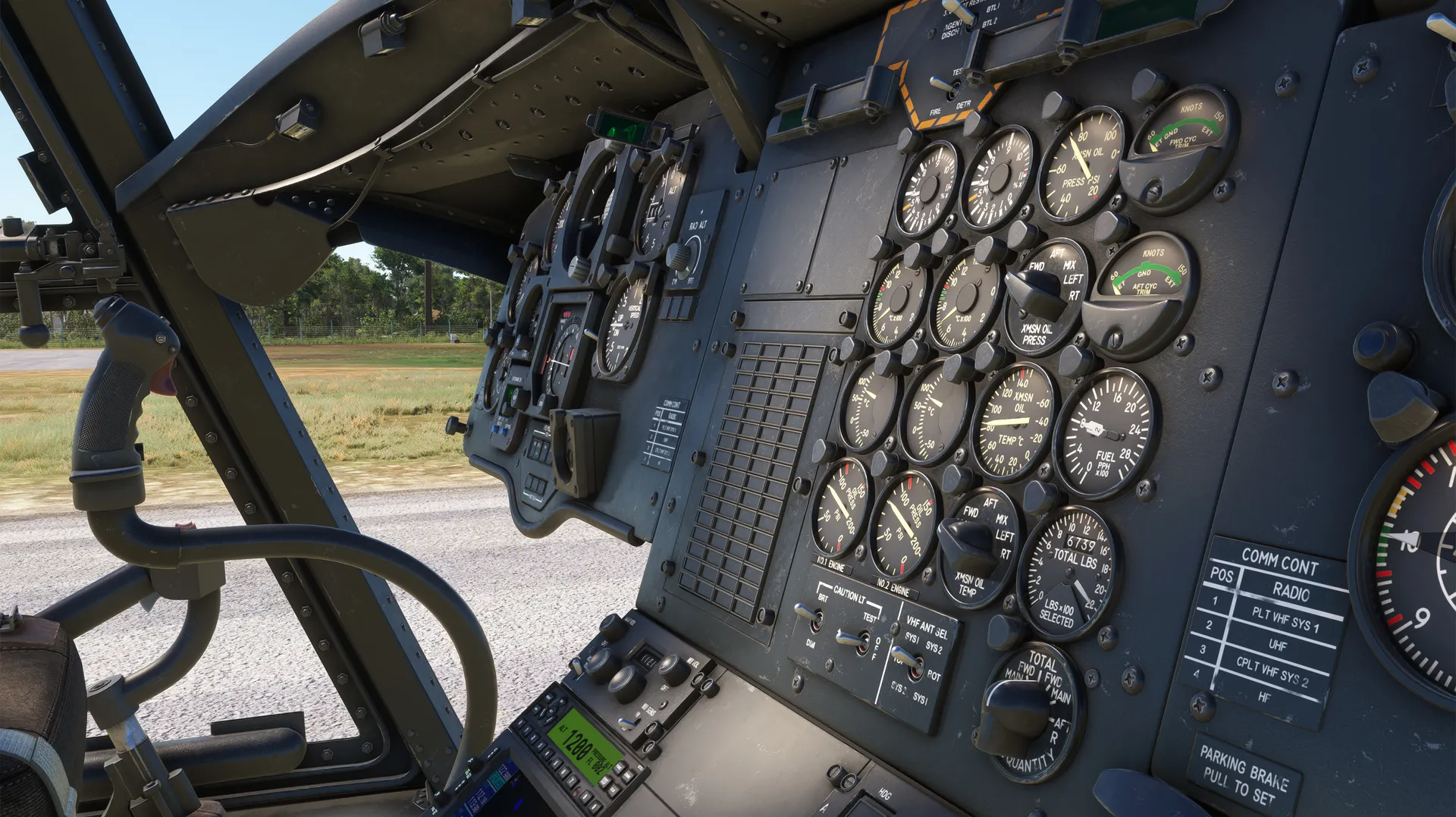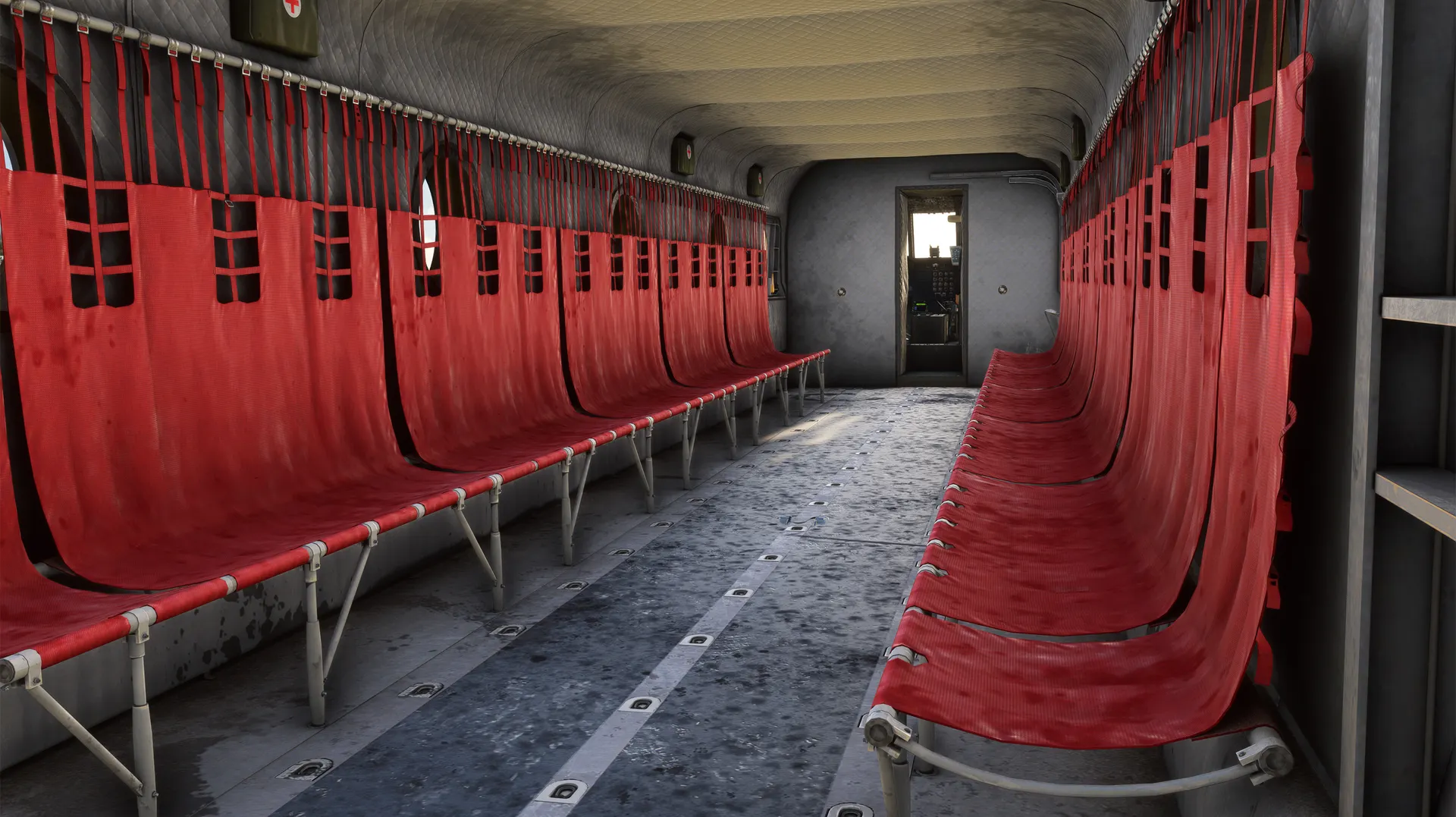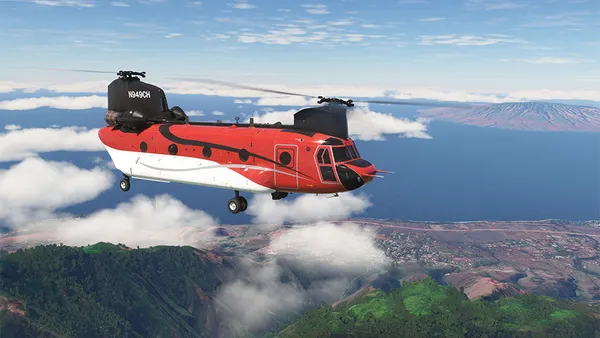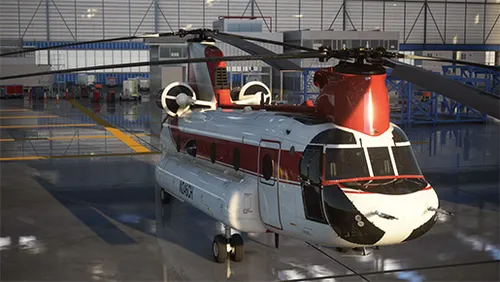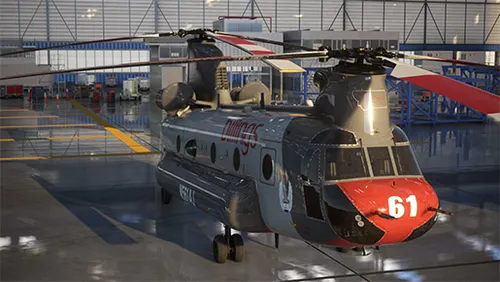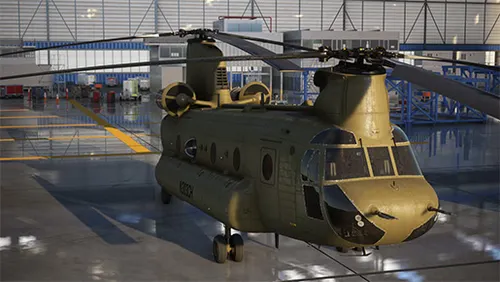The CH-47D Chinook is an American tandem-rotor, heavy-lift helicopter. The design was initially developed by the Vertol Corporation and the airframe was manufactured by Boeing, both of the United States. The CH-47D is an evolutionary development of the initial production iterations of the CH-47 series of airframes, the CH-47A, CH-47B, and CH-47C.
The CH-47 Chinook is one of the aviation world’s most successful and renowned tandem-rotor helicopters, a type that comprises two main rotor systems as opposed to a single main rotor system with an anti-torque tail rotor. The tandem-rotor helicopter is optimally efficient because all available shaft horsepower is used for thrust, whereas anti-torque rotors require upwards of 15 percent of a conventional helicopter’s power.
The CH-47’s design traces its lineage to American rotorcraft pioneer Frank Piasecki. Piasecki’s company, Piasecki Helicopter, developed the HRP Rescuer, one of the earliest tandem-rotor designs. The piston-powered Rescuer took its maiden flight in 1945 and it entered service with the United States Navy, Marine Corps, and Coast Guard. It proved to be the first helicopter with the capability to carry a substantial load. Piasecki and engineers working under him developed a series of subsequent platforms, each incrementally more powerful and operationally robust.
Piasecki’s work led to the Vertol Corporation’s development of the CH-47 for a United States Army requirement issued in the 1950s. The prototype took its maiden flight on September 21, 1961. The CH-47 Chinook, which was named after the Chinook people of the northwestern United States, was designed based on years of research, development, testing, and user feedback on previous tandem-rotor designs. Powered by two turboshaft engines, the initial Chinook model featured rotor systems with three large rotor blades and a spacious fuselage. Three production variants followed, the A, B, and C, each successively more powerful and capable. The Chinook became legendary during the Vietnam War for its ability to move large amounts of personnel and equipment, quickly and with precision, in all types of conditions, day and night.
The CH-47D evolved due to a mid-1970s Chinook modernization program. Virtually all CH-47D airframes originated as A, B, or C models that were upgraded to D standards. Improvements included upgraded engines, transmissions, rotor blades, avionics, flight controls, and cargo systems. The D model was introduced in 1979 and served throughout the world in the ensuing decades, primarily for military users but also for some civil users.
The CH-47D became a legend due to its versatility, ruggedness, power, load carrying ability, and precision handling. It can sling load large artillery systems and other bulky items, carry dozens of troops, and haul thousands of pounds of cargo within its interior. The CH-47D played crucial roles in several military operations over the decades, including in Kuwait, Afghanistan, and Iraq. The powerful CH-47D is an exceptional high-altitude helicopter that has undertaken rescue operations as high as 20,000 feet above sea level on Denali (Mount McKinley), the highest mountain in North America.
The CH-47 Chinook has served the militaries of over two dozen nations in addition to the United States. It is piloted by two and can carry up to 55 troops (although it has carried many more during emergency situations). It can lift upwards of 26,000 pounds of cargo.
The helicopter has an overall length of 98 feet, a fuselage length of 52 feet, a fuselage width of 12 feet, 5 inches, and it stands 18 feet, 11 inches tall. Each of its 3-blade rotor systems has a diameter of 60 feet, with system blade chord of 32 inches.
The Chinook is powered by two Lycoming T55-L-712 turboshaft engines that each deliver up to 3,750 shaft horsepower. The CH-47D has a range of 460 miles, a cruise speed of 184 miles per hour, a maximum speed of 196 miles per hour, and a service ceiling of 20,000 feet above sea level.
